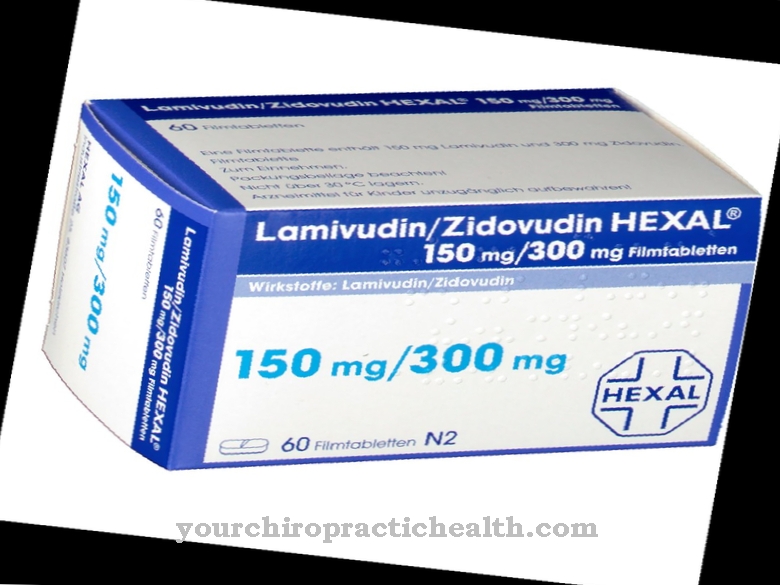Erythromycin is an antibiotic and is used to prevent or treat bacterial infections. It can be used on the skin, i.e. externally, or orally, i.e. internally. Erythromycin is subject to a doctor's prescription in Germany, so it is not available for sale in pharmacies.
What is erythromycin?

Erythromycin is a so-called macrolide antibiotic. It belongs to a certain group of active substances within the antibiotics. Other well-known representatives from this group of antibiotics are, for example, clarithromycin or azithromycin.
Typical areas of application of macrolides are inflammation of the paranasal sinuses, acute bronchitis or syphilis. Some types of bacteria have the ability to hide in the body's cells, which is why these are usually difficult to reach for antibiotics. However, erythromycin has the property of penetrating the cell membrane and therefore also acts against bacteria intracellularly, i.e. within the cell.
Erythromycin does not kill the pathogens directly, but effectively inhibits their growth and reproduction. Medicines with the antibiotic active ingredient erythromycin are often used both on an outpatient and inpatient basis in clinics. The doctor will decide on the duration of the treatment, which depends on the type and severity of the infection.
Pharmacological effect
It has been proven that erythromycin prevents bacteria from producing new protein molecules, which are, however, essential for the growth of these pathogens. The bacteria thus inhibited in their growth and reproduction can be better recognized and eliminated by the immune system after treatment with erythromycin. Erythromycin is so effective because it directly attacks protein synthesis in bacteria.
Macrolide antibiotics are often only the second drug choice, namely when penicillin cannot be administered to treat certain bacterial infections.
It has been shown that the erythromycin molecule attaches itself directly to the ribosomes and thus blocks protein synthesis. Erythromycin has two key advantages over other antibiotics. On the one hand, it can diffuse into body cells and, on the other hand, its breakdown in the body is very delayed. This leads to a relatively long duration of action. Compared to other antibiotics, they do not have to be taken as often or only briefly. In order to effectively fight an infection, a three-day dose in high doses is often sufficient in many cases.
Depending on the severity of the infection, erythromycin can also be combined with other groups of antibiotics.
Medical application & use
Erythromycin is used internally and externally in various dosage forms. For bacterial skin infections, erythromycin is often the drug of choice. For example, skin injuries, surgical wounds or burns are externally treated with erythromycin. The antibiotic penetrates deep into the layers of the skin. A superficial treatment is therefore also well suited for acne. When treated with erythromycin, the skin inflammation subside within a few days.
For internal treatment, erythromycin is used against a variety of bacterial infections, but also to prevent reinfections. Typical internal areas of application of erythromycin are, for example, tonsillitis, otitis media or pneumonia.
Urinary tract infections, conjunctivitis of the eye, chronic bronchitis and bacterial colds are also treated with erythromycin.Sufficiently high active ingredient concentrations can be detected in the infected tissues after a short period of therapy.
Streptococci, a specific type of bacteria, quickly develop a strong resistance to erythromycin. The development of resistance of bacterial strains is not only an increasing problem in the context of therapy with macrolide antibiotics.
Risks & side effects
The greatest risk associated with treatment with erythromycin is the risk of developing resistance in the pathogen. In addition, treatment with erythromycin harbors further dangers, risks and side effects. If the active ingredient is administered together with other antibiotics, so-called cross-resistance can easily occur after a certain period of treatment.
Erythromycin is, despite its good effectiveness, unfortunately also characterized by an extremely high rate of interaction with other drugs. For example, the effect of theophylline, certain anticoagulants and pain relievers is enhanced. If antihistamines for allergies or sleeping pills are administered at the same time, cardiac arrhythmias can occur.
If erythromycin is taken together with ergotamine, it can lead to sudden, spastic vasoconstriction, which requires an inpatient admission to a hospital. In addition, overdoses of the agent must be avoided in any case due to the liver toxicity.



























